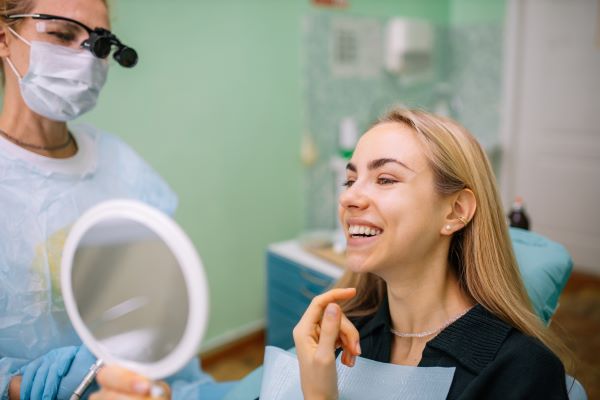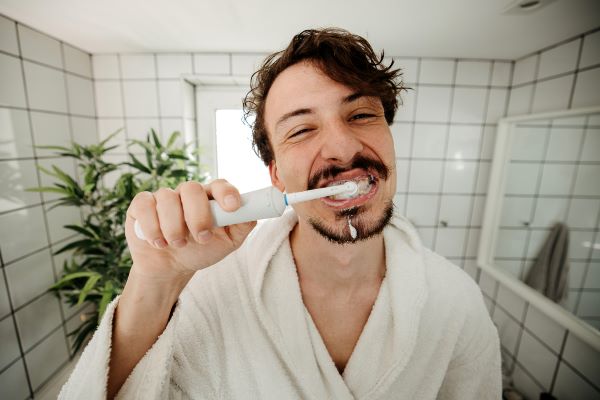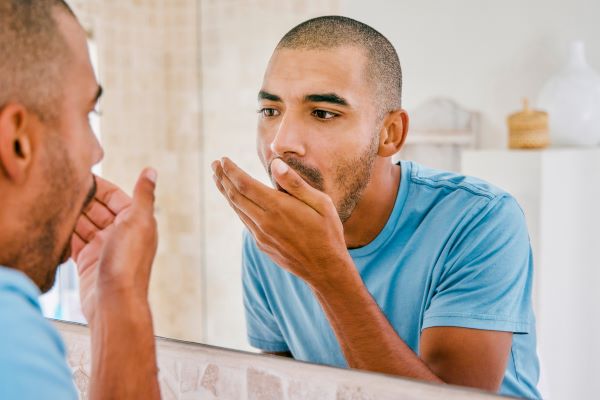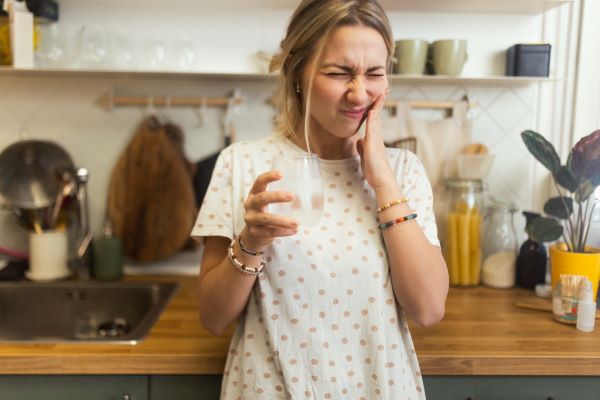-
If you’ve been noticing your teeth getting a little more yellow than you’d like lately, you may be wondering what your options are to whiten them.
From at-home kits to a trip to the dentist – let’s investigate what could work for you and your smile.
What causes stains and discolouration?
Certain habits and food and drink we consume can lead to teeth staining and discolouration. Some common factors are:
- smoking cigarettes and vapes (e-cigarettes)
- drinking red wine, coffee or tea. (Though, it’s worth keeping in mind, green tea may help to promote healthy gums by reducing inflammation)
- eating certain spices and berries and even intensely coloured foods like beetroot can also lead to teeth staining.
There can be other reasons too, including:
- aging, as the white enamel layer on your teeth starts to wear away
- some medications taken during tooth development
- injury to your teeth can also cause discolouration.
Discolouration inside the tooth can be caused by:
- tooth decay
- a problem with the dental pulp
- old fillings
- conditions affecting the teeth while they are developing.
Tooth whitening alone won’t improve these conditions. You will need to visit a dentist for treatment.
How to avoid stained teeth
The best way to avoid stained teeth is to avoid or limit the factors listed above – and practice good oral hygiene, including regular brushing with a soft toothbrush and flossing. You can also use water to rinse your mouth out after consuming food or drink that may stain your teeth.
But, if your pearly whites have become discoloured over time, you may want to consider whitening them. What do you need to know?
How does the dentist whiten your teeth?
If you’re considering tooth whitening, it’s best to have a chat with your dentist first – who can tell you if it’s the right thing for you.
Teeth whitening bleaches your teeth to lighten the enamel.
If you choose to proceed with a whitening treatment done by your dentist, you have a few options:
In-chair whitening
Done while you’re in the dental chair, this treatment uses a strong hydrogen peroxide gel and may also place a light over your teeth to achieve whitening.
Take-home teeth whitening
If you opt for this take-home treatment, your dentist will give you custom-made plastic trays that fit over your teeth. You can pop these in at home, along with a whitening gel.
Internal bleaching
Sometimes treatment can whiten the inside of a tooth. If your teeth have been injured or you’ve had root canal treatment that has caused internal staining, you might opt for this. Whitening treatment is placed in the centre of the tooth and is left in for several days before being cleaned and fixed with a filling.
Whitening toothpaste
Your dentist may also suggest a whitening toothpaste. These may have a more subtle effect on your teeth colour than the other options.
What are the risks of teeth whitening?
Keep in mind, there are some risks that come with teeth whitening, including:
Chemical burns
A strong hydrogen peroxide whitening treatment can cause chemical burns. If this gel touches your lips, gums or tongue, it may burn and turn into ulcers before it heals.
Sensitive teeth
Teeth whitening can cause teeth to become sensitive to cold temperatures, which can be painful. Your dentist can give you advice about how to prevent or manage tooth sensitivity.
When to avoid teeth whitening
It’s best to chat with your dentist about your personal situation – but keep in mind that teeth whitening is not recommended for people:
- with sensitive teeth or gum disease
- with cracks or holes in their teeth
- need to treat other dental problems
- who are pregnant or breastfeeding.
Do at-home kits and whitening toothpastes work?
As well as those you can take home from the dentist, you can also buy whitening toothpastes and teeth whitening kits online or at the chemist or supermarket. These may contain ingredients such as bleaching chemicals, charcoal or bicarbonate of soda.
Keep in mind that only registered dental practitioners can use strong whitening gels and products that contain more than 6% hydrogen peroxide, which are most effective at whitening teeth.
The Australian Dental Association recommends visiting your dentist to assess your mouth before opting for an at-home kit.
If you opt for an at-home kit, make sure you always read the label and use only as directed, as misuse may lead to dental issues.
When to see the dentist?
Going to the dentist for regular cleans and check-ups can keep your teeth in overall good shape and may help prevent discolouration.
When was your last time in the chair? If it’s time to book, consider chatting with your dentist about your teeth whitening options – to really give yourself something to smile about.
READ MORE: Signs it's time to visit the dentist
Stained teeth? Top tips for teeth whitening


Teeth. You’d literally suck without them.
Our 100% back on dental check-ups are just one of the ways you can get great value from our extras covers. Learn more about how extras cover can help you take control of your health & wellbeing.
-
How to prevent and treat dental injuries
Specialist dentist Associate Professor William Ha shares some tips on how to keep your teeth safe during sports by wearing a mouthguard.
-
The best way to care for your teeth
Tips from a dentist on the best ways to care for your teeth.
-
Can you brush your teeth too much?
Follow this brushing guide for cleaner teeth and better dental health.
-
What causes bad breath?
Find out how to keep your mouth smelling fresh
-
Ouch! What can you do about sensitive teeth?
Sensitive teeth can be painful. These dental health tips can help you prevent or reduce teeth sensitivity.
-
10 foods for clean, healthy teeth
Keep your smile bright with these teeth-friendly foods
Things you should know
*Eligible members on Medibank extras (excluding Healthy Living Extras and Gold Ultra Health) can claim a maximum of two 100% back dental check-ups per member, per year at a Members’ Choice Advantage provider (including bitewing x-rays where clinically required). For members on eligible extras, the first two check-ups do not count towards your annual limit. Members with Healthy Living Extras can get 100% back on one dental check-up each year at a Members’ Choice Advantage provider (including up to two bitewing x-rays, where clinically required) or at a Members’ Choice provider (excluding x-rays). Members with Gold Ultra Health can get 100% back on up to three dental check-ups at a Members’ Choice or Members’ Choice Advantage provider. Members’ Choice and Members’ Choice Advantage providers are not available in all areas. Two month waiting period applies. Some products may have other dental benefits, check your cover summary for details.





